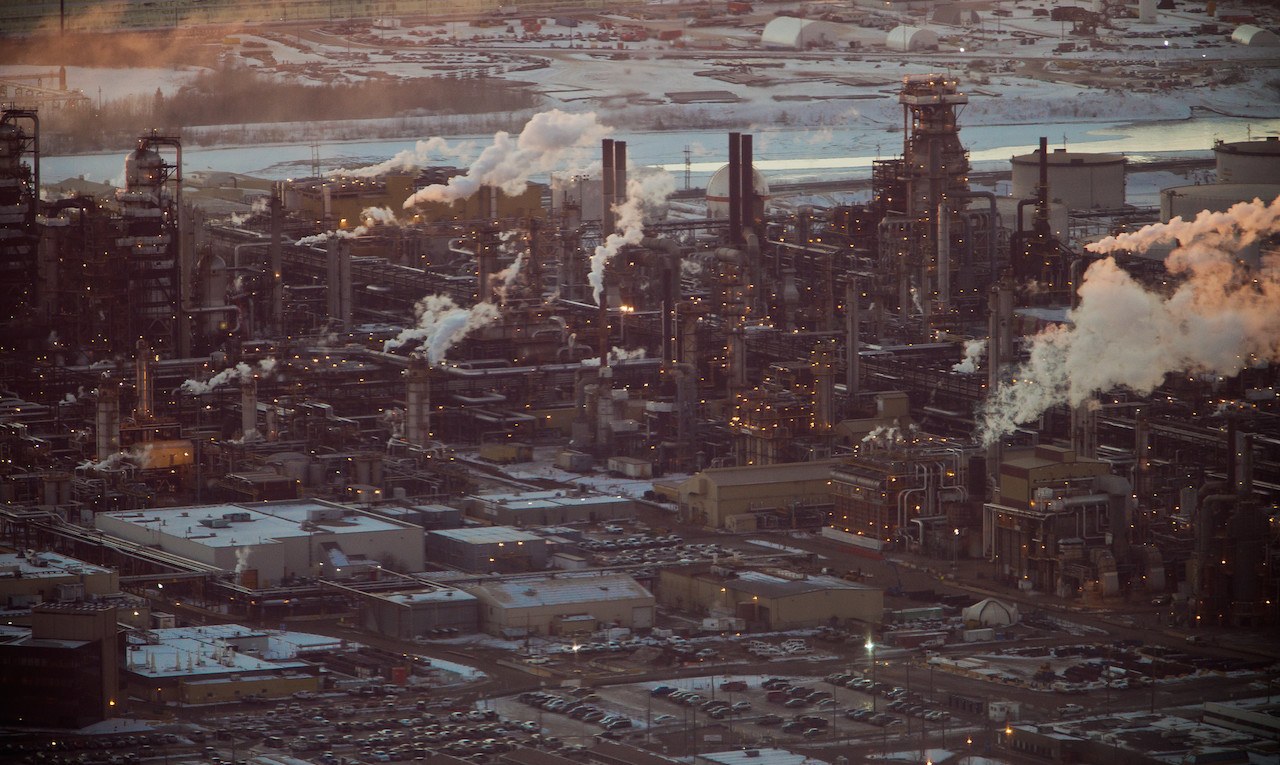The oil and gas industry is putting great efforts into trying to convince the Canadian public that they are making strides to be more environmentally responsible. Don’t buy it.
The fact is oil and gas companies’ total impact on Canada’s water, land, species, and the climate continues to grow. Even on a per barrel basis, oil companies are creating ever more carbon emissions.
‘Canadian oil has never been dirtier’
Over the last three decades, Canada’s oil and gas sector has shifted towards production that is higher in carbon and more risky — from conventional oil to tar sands oil, and with increased production from offshore. This is documented in our new report on the barriers the oil and gas lobby puts up to slow progress on climate action. On average, the amount of carbon emitted to produce a barrel of Canadian oil has continuously increased since 1990 — a 16 per cent increase overall. Canadian oil has never been dirtier.
The oil lobby and some political parties have actually suggested that Canada could reduce global carbon emissions by exporting more oil and gas. And yet, Canada’s oil is one of the dirtiest in the world. A study published in the prestigious journal Science found that 46 countries produced oil with a lower per-barrel carbon footprint than Canada. Only three countries were worse: Algeria, Venezuela, and Cameroon. We’re 47th out of 50 countries.
So this is the opposite of what the oil companies are saying. The truth is that exporting more Canadian oil will increase global carbon emissions.
Two other factors need to be taken into account
There are two other factors that show the issue is actually worse than what the data tell us. First, a multitude of scientific studies show that oil and gas facilities leak a lot more climate-altering gases than what is reported by industry. That’s true for conventional oil and gas production that leaks a lot of methane — a potent greenhouse gas. It’s also true for tar sands operations that emit on average 30 per cent more carbon dioxide than officially reported.
Second, Canada is upgrading and refining less and less oil. It’s also shipping more raw bitumen to American states. As a result, an increasing portion of oil’s carbon footprint is being “offshored” to the U.S. That carbon is still being emitted, but it just happens to be on the U.S.’s books.
Where would Canadian oil rank in carbon emissions if those two factors were taken into account? Would it be worst in the world?
Let’s not forget the carbon emitted when oil is burned, mostly in cars, trains, and buses that could run on renewable electricity instead.
And that’s still only considering climate change.
The environmental impact of Canada’s oil and gas industry keeps going up
Oil and gas operations are also creating massive amounts of water pollution, local air pollution, and land disturbance. They also impact plants, animals, and even entire species. Abandoned oil and gas wells, old tar sands mines, and toxic tailings ponds have created an environmental disaster that could cost $260 billion to clean up. That tab is likely going to be picked up by governments rather than the companies that created the mess. That’s because the funds available for cleanup would cover only 0.6 per cent of the cleanup costs.
Oil executives need to stop lying. The environmental impact of oil and gas companies operating in Canada is only going up.
And governments need to act. Federal and provincial decision-makers need to acknowledge that the oil and gas industry in Canada is big enough. Over the next two to three decades, we need to transition away from fossil fuels like oil and gas and towards clean, renewable energy. In the meantime, governments need to ensure that the environmental cost of oil and gas operations be placed entirely on those responsible — petroleum companies themselves.
Dale Marshall is national program manager with Environmental Defence. This article was first published on the Environmental Defence blog.
Image: kris krüg/Flickr



